David Blaauw named Kensall D. Wise Collegiate Professor of Electrical Engineering and Computer Science
Blaauw’s innovations in low-power computing led to development of the Michigan Micro Mote, the world’s smallest computer.
David Blaauw was named the Kensall D. Wise Collegiate Professor of Electrical Engineering and Computer Science in recognition of his outstanding contributions in the areas of research, education, and leadership.
Blaauw is a creative innovator and world-leader in the design and development of low-power computing. His research and collaborations led to the development of the world’s smallest computer, called the Michigan Micro Mote (M3). First developed for implantable medical devices, later versions of the M3 opened the door to a host of Internet of Things applications – including air and water quality detection, smart home systems, health monitoring, energy management, infrastructure monitoring, and much more. He has worked with researchers wanting to monitor the bottom of the sea, the flight of butterflies, the depth of oil wells, tumors inside the body, and develop a genome sequencing accelerator – and he continues to push the boundaries of what computers can do.
Before coming to Michigan in 2001, Prof. Blaauw managed the High Performance Design Technology group at Motorola, Inc., where he received the Motorola Innovation Award, and the Motorola High Impact Technology Award.

 Enlarge
Enlarge
At Michigan, Blaauw quickly established himself as a pioneer in the area of statistical static timing analysis (SSTA), a specialty in the area of computer-aided design (CAD). SSTA was introduced to address process variations introduced as CMOS technology scaled down to the nanometer realm.
Blaauw also developed, together with his collaborators, a technique that came to be called Razor, which at the time showed a radical departure from traditional circuit design. Razor used adaptive design techniques to enable processor chips to automatically tune their supply voltage to the point of failure, which lowered power consumption while increasing overall performance.
This research resulted in best paper awards in 2003 and 2004, the 2012 ICCAD Ten Year Retrospective Most Influential Paper Award, the 2007 Microprocessor Review Analysts’ Choice Award in Innovation, and the 2008 Richard Newton GSRC Industrial Impact Award.
In related research, Blaauw is one of the key developers (with Profs. Ron Dreslinski, Trevor Mudge, and Dennis Sylvester) of a technique called near-threshold computing (NTC), first published in 2007. With NTC, operating voltage is lowered to near the threshold voltage of the devices where they pivot between being on and off. The technique is applicable to high-performance, personal computing, and miniature sensor-based platforms alike. It is a technique now used by a number of the leading companies in the industry.

 Enlarge
Enlarge
In 2008, Blaauw, along with long-time collaborator Dennis Sylvester and their research students, broke the record for processor size and low power with the Phoenix Processor. Measuring one millimeter square and consuming just 2.8 picojoules of energy per cycle, it consumed 90% less energy than the most efficient chip on the market. It was named a Key Innovation for 2008 by MIT Technology Review.
Perfecting extremely low-power computing devices enabled Blaauw, Sylvester, colleague David Wentzloff and their group to break through the ceiling of millimeter-scale computing in 2011 with a low-power sensor system that was 1,000 times smaller than comparable commercial devices.
Called an intraocular pressure sensor monitor (IOPM), this device measured 1mm3 and was created to monitor eye pressure from within the eye itself. It contained a near-threshold ARM processor, sensor (created by Prof. Wise), two solar cells, a battery, and a power management unit.
By 2014, Blaauw and colleagues were disseminating their world’s smallest computer, dubbed the Michigan Micro Mote (M3), to researchers around the world. This autonomous sensing computer has 8 layers, designed so that different sensors could be inserted depending on the desired functionality. Some versions of the M3 computer could transmit data as far as 100 meters.
Just four years later, Blaauw and an expanded team of researchers that now also included Profs. Jamie Phillips, Hun-Seok Kim, and Anthony Grbic, developed a computing system measuring 0.04mm3. These miniscule computing devices are complete with RAM, photovoltaics, processors, and wireless transmitters and receivers. Too small to have conventional radio antennae, they receive and transmit data with visible light, which required inventing new approaches to circuit design.
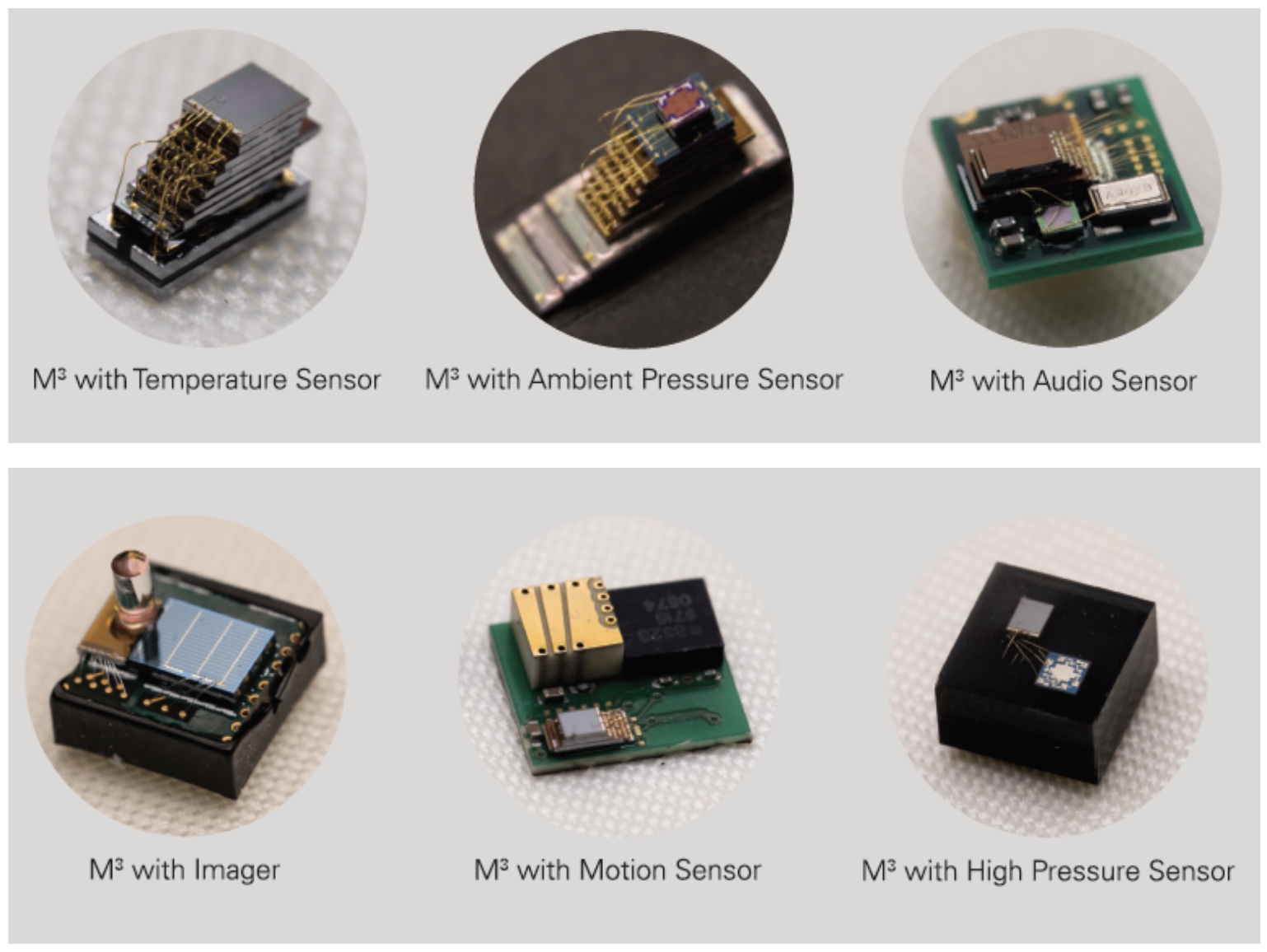
 Enlarge
Enlarge
Based on the technology developed at Michigan, Blaauw co-founded two companies with his colleagues related to low-power computing and millimeter-scale computers. The first, called Ambiq Micro, was co-founded in 2010 with Prof. Dennis Sylvester and former student Dr. Scott Hanson. The company has grown to more than 75 employees, and already shipped nearly 40 million chips. The second, CubeWorks, was founded in 2013 with faculty and student collaborators David Sylvester, David Wentzloff, Prabal Dutta, Yoonmyung Lee, and ZhiYoong Foo. To date, Blaauw has 68 issued U.S. patents.
Blaauw maintains a large research group that works on a variety of fundamental and application-specific problems in low-power and millimeter-scale computing. During the past 17 years, he has mentored 27 master’s students and graduated 28 doctoral students.
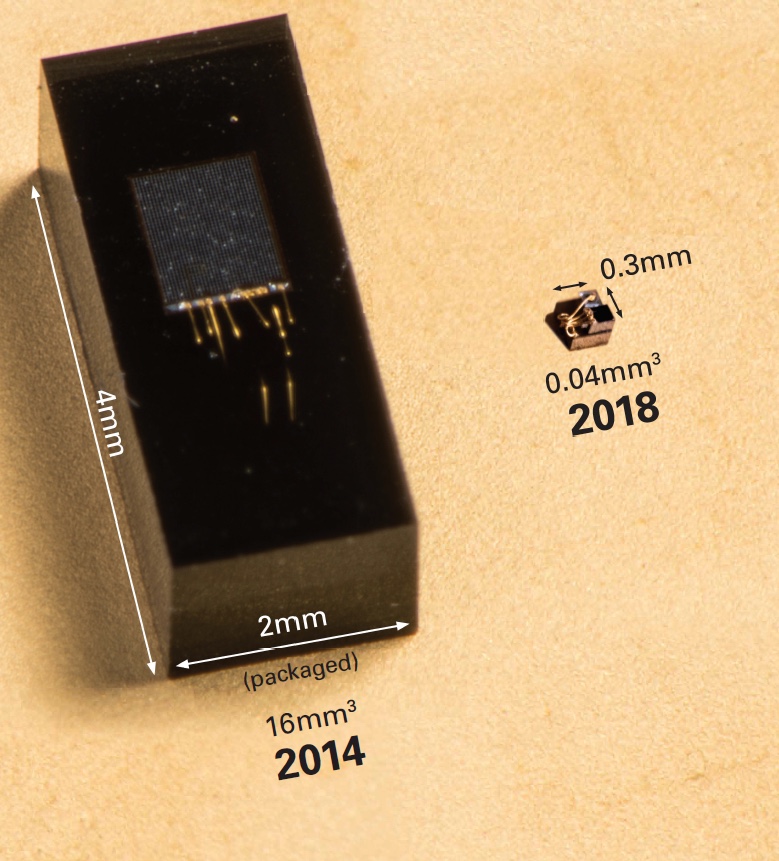
 Enlarge
Enlarge
The papers of his research group have had a major impact on the field. In addition to the awards already mentioned, he has received the Ten Year Retrospective Most Influential Paper Award from the IEEE/ACM International Conference on Computer Aided Design (ICCAD), and the 2017 ACM SIGARCH/IEEE-CS TCCA ISCA Influential Paper Award for the impact of his research in power-efficient computing published 15 years earlier. He has received 12 best paper awards to date, including three IEEE Micro Top Pick awards (2004, 2016, and 2019) for research published the previous year.
He received International Solid-State Circuits Conference (ISSCC) 60th Anniversary Special Recognition as a top 10 contributing author over the last 10 years; and he received several honors at the Design Automation Conference 50th Anniversary, including being named one of the top 10 most cited DAC authors in DAC’s 50-year history, and earning two DAC Collaborative Awards.
A consummate collaborator, Blaauw was a member of the team that received the 2008 Ted Kennedy Family Team Excellence Award from the College of Engineering for individual and collaborative research in low-power computing.
In 2016, Blaauw received the Semiconductor Industry Association University Researcher Award, which recognizes lifetime research contributions to the U.S. semiconductor industry. He is an IEEE Fellow.



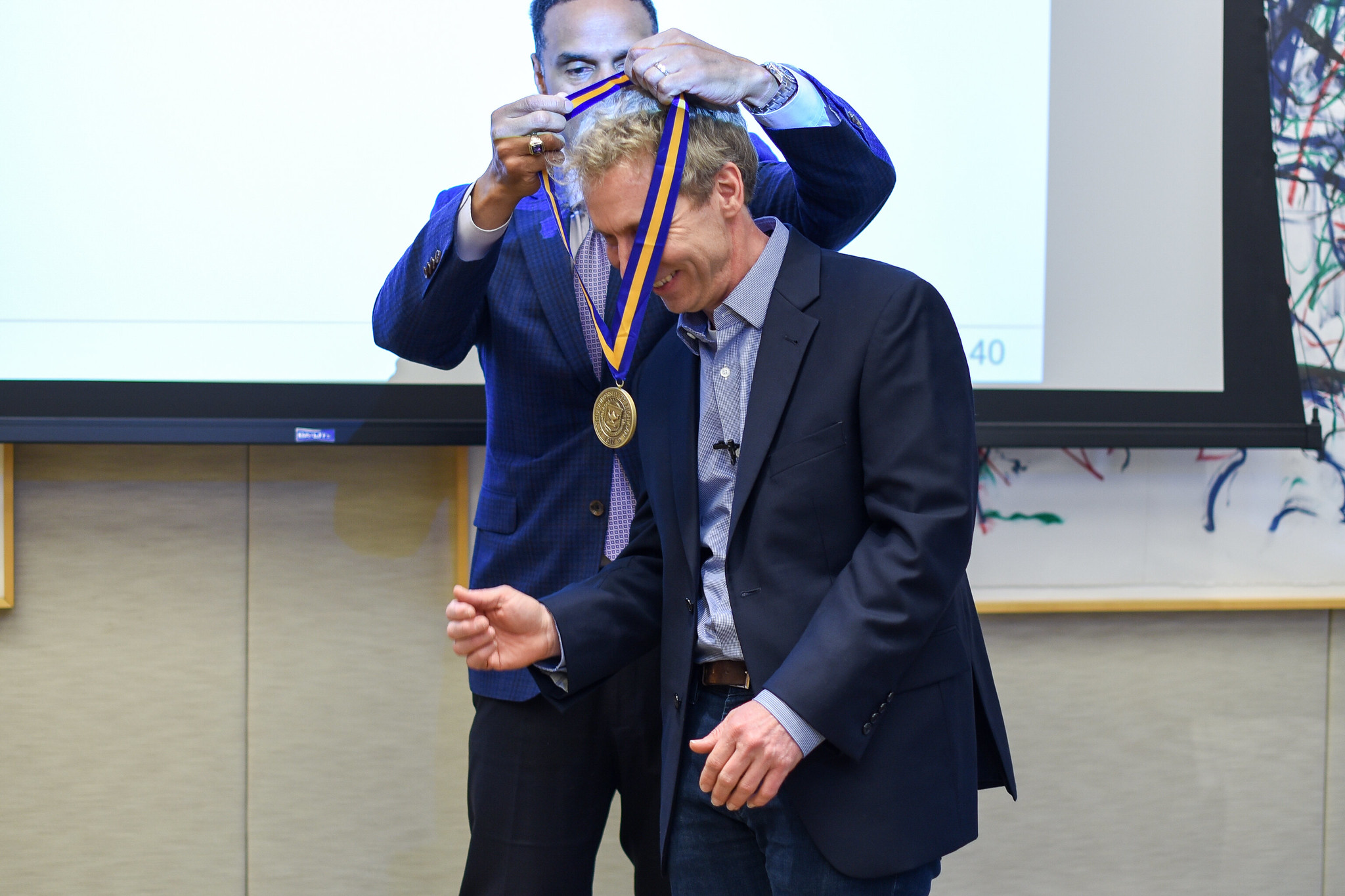
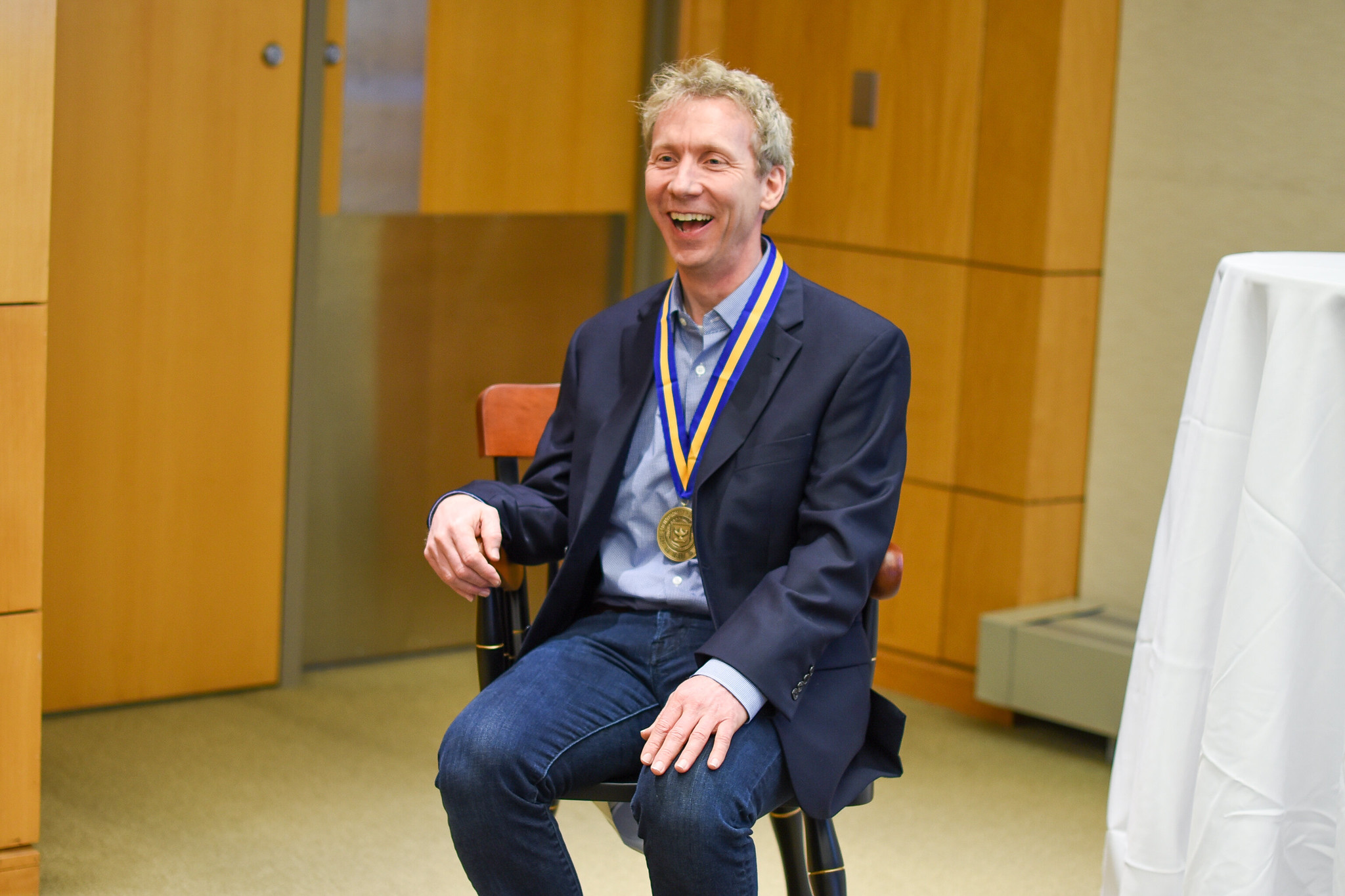
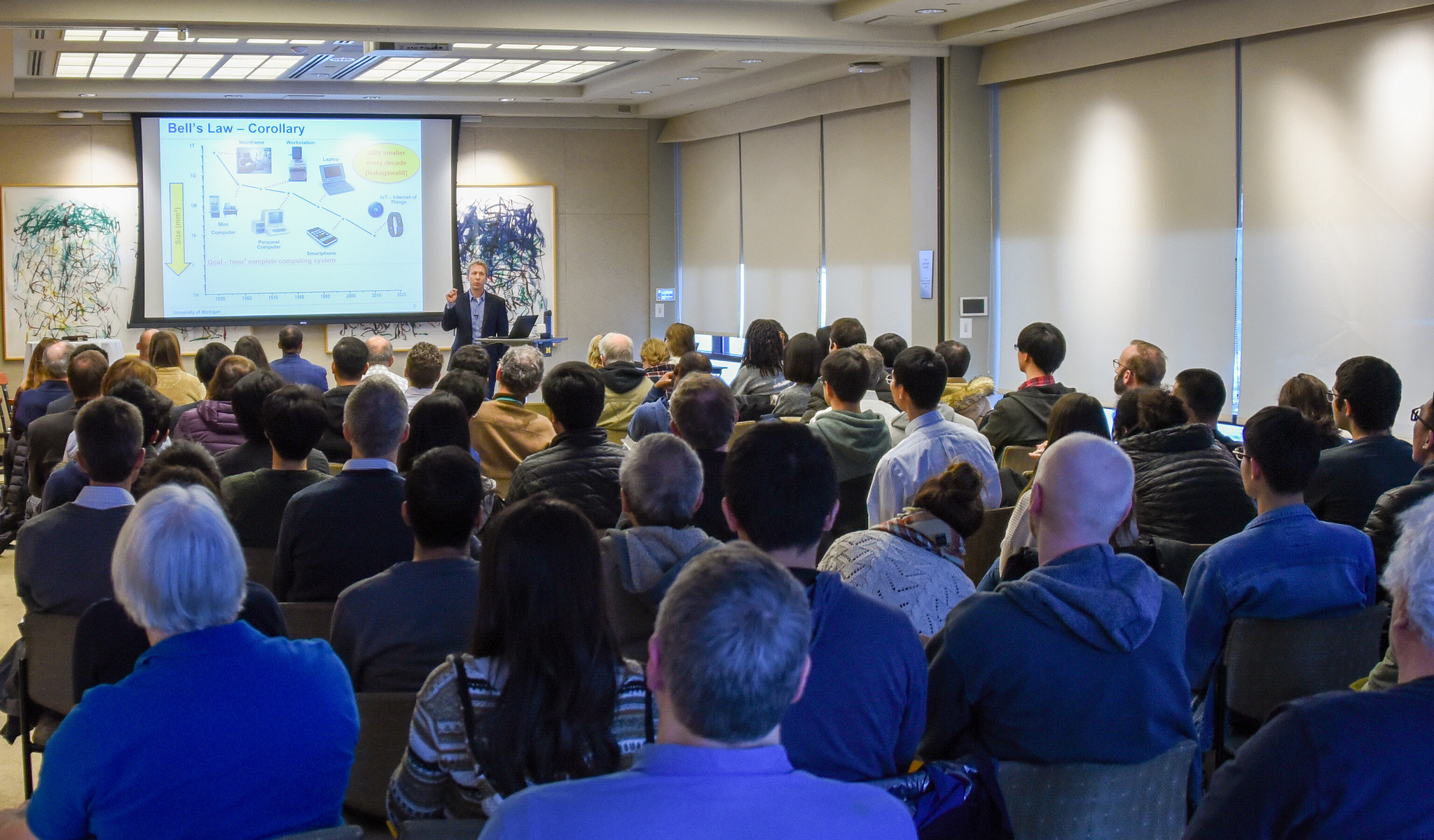
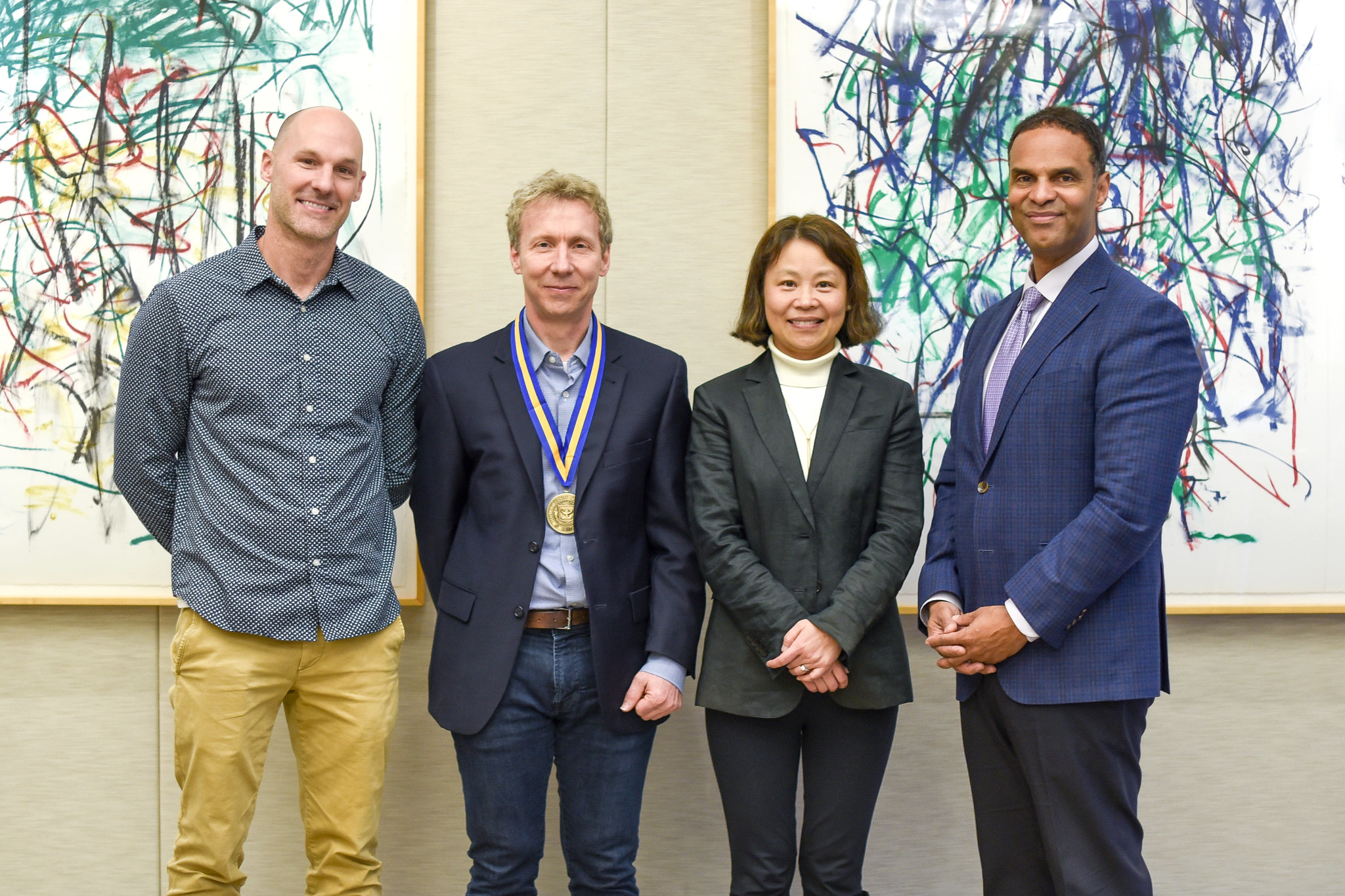

 Enlarge
Enlarge
Kensall D. Wise, William Gould Dow Distinguished University Professor Emeritus and former Director of the NSF Center for Wireless Integrated Microsystems, “is one of the pioneers of MEMS (micro electrical mechanical systems) which were a key enabler for miniature IoT (internet of things) systems and opened a path to mm-computing,” said Blaauw, who was given the opportunity to determine the name of the collegiate professorship.
Wise came to Michigan in 1974, and built a world-class program in sensors, MEMS, and microsystems that is supported by one of the top nanofabrication facilities in the nation, thanks in large part to his efforts. He was one of the key architects of the neural probes which came to be known simply as the “Michigan Probes.” These probes were distributed to research groups around the world, and used to explore treatments for epilepsy, Parkinson’s Disease, deafness, paralysis, and other disorders.
Wise established the NSF Center for Wireless Integrated MicroSystems (WIMS) in 2000. The first 10 years of WIMS resulted in 12 spinoff companies, 59 patents, more than 150 doctoral students, and an estimated economic impact of $400M. He has co-founded three companies.
Among his many honors and awards are the IEEE Solid-State Circuits Field Award, the Columbus Prize, the U-M Distinguished University Innovator award, and the SRC Aristotle Award. Wise is an IEEE Fellow and a member of the National Academy of Engineering.

 MENU
MENU 
